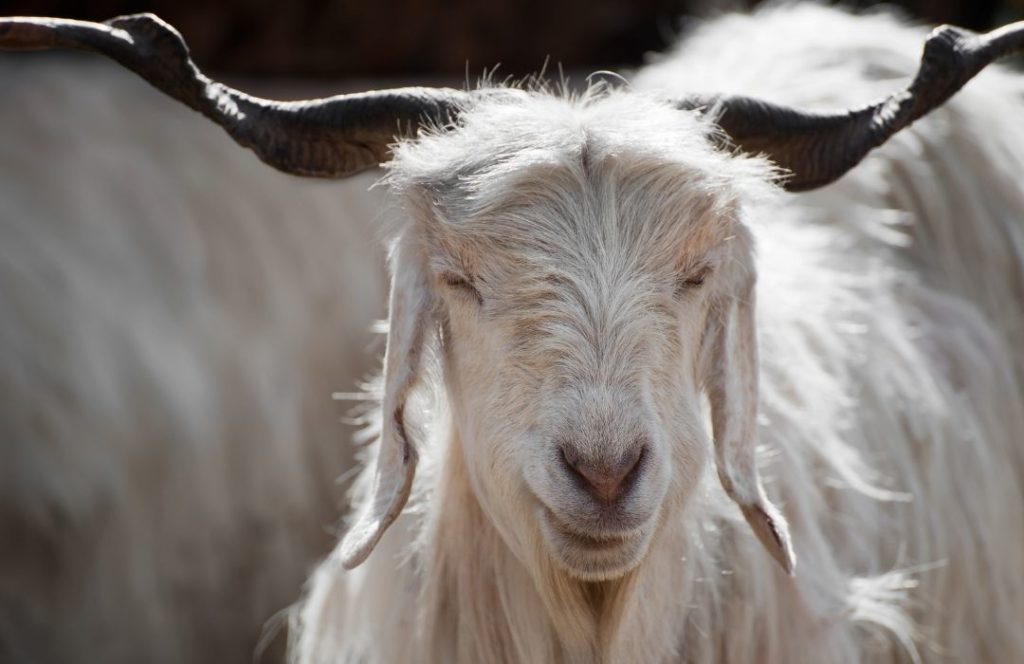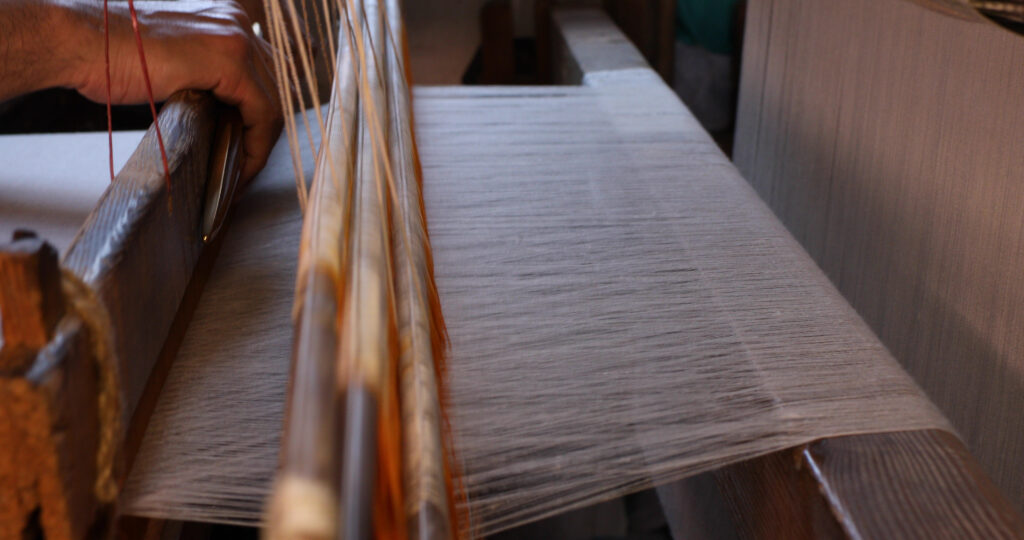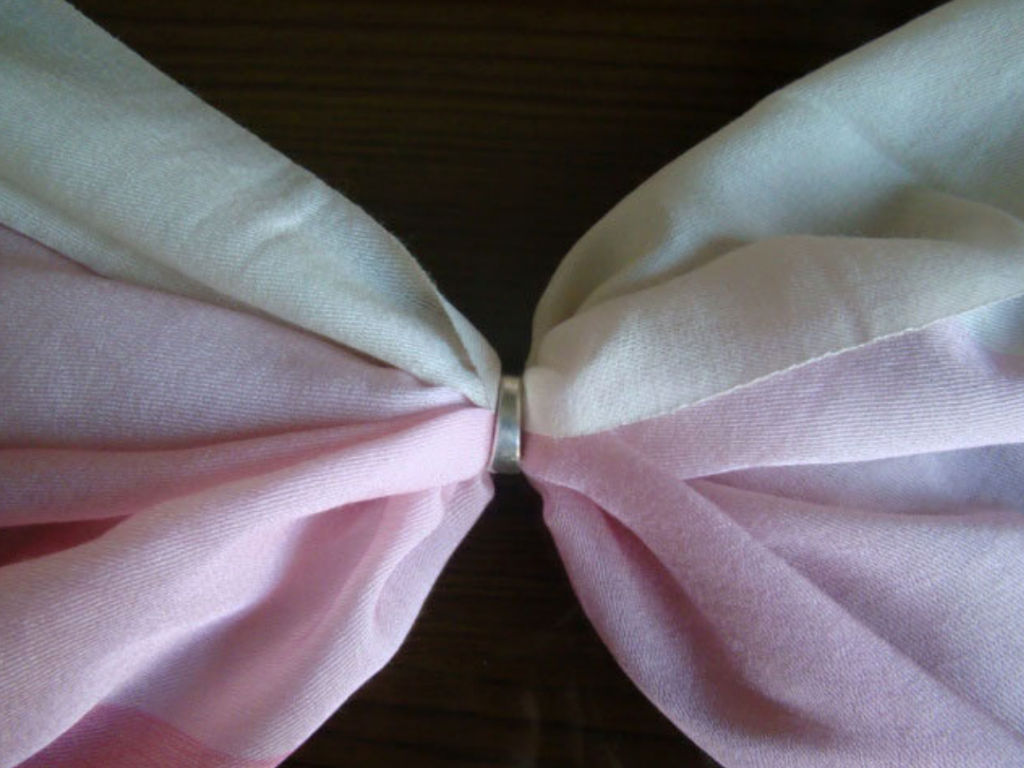It was around the 15th century when the art of Pashmina was discovered for the first time. But during this period, no shawl, as such, was doubtful, as synthetic fibre hardly existed. The art was at its zenith, and artisans put their heart and soul into making one single piece, even if it took a few years to complete. But soon machines took over, and the invention of synthetic fibre became known. Unfortunately, a large number of dishonest traders began mixing pure Cashmere fibre with this synthetic one.
Power looms, the new antagonists in the world of ancient art, needed string fibre to pass through its cruel mechanism, which Cashmere was not. Hence, nylon and silk began to be mixed with Cashmere, and as such fake shawls came into existence. Kashmiri pashmina, which was known for its soft, smooth, and handmade weave, now became common like any other wrap accessory, as customers found “nothing special” in it.
Kashmiri Pashmina in the Present Times
In the current times, Kashmiri Pashmina has its competitors from a number of places where the Himalayan range is present. Kashmir produces the least percentage of pure Cashmere wool, while China is the giant in Pashmina products. China is known to produce almost 70 per cent of the world’s Cashmere, while Mongolia stands in second place as far as Cashmere production is concerned. The 10 per cent that is left, comes from other places. However, the best quality Cashmere is produced in Kashmir, even though it accounts for the least amount out of the total Cashmere production in the world (less than 1 per cent).
The Himalayas are home to a number of varieties of Cashmere goats. It is, hence, not just Ladakh where the Cashmere goats are found, but a number of places in China, Nepal, and Afghanistan where this species is found.

Changthangi goats: Changthangi goat is the species of Cashmere goat which is found in Changthang, Ladakh. It is reared in Ladakh and a few parts of Tibet.
Malra Goats: Malta goats are found in Kargil. It was just some 5-6 years ago when Malra was found to have the potential to produce Cashmere, albeit of lower quality as compared to Changthangi goat.
Chegu Goat: The Cashmere producing goats are found in Himachal Pradesh (Kinnaur area), and high-altitude areas of Uttarkashi, Chamoli and Pithoragarh, districts of Uttaranchal bordering Tibet.
Chyangra Goat: The goat-producing Cashmere wool found in the areas surrounding Nepal is called Chyangra.
The Geographical Indication:
Kashmir’s Pashmina shawls are considered the best quality shawl, out of all other varieties of the same. To protect and honour this badge, Kashmiri Pashmina was given the Geographical Indication (GI) as an authenticity stamp. The GI mark is a certification of the given product ascertaining that its unique qualities are not found anywhere else in the world and that it belongs to a certain geographical area. Hence, a GI mark on a Pashmins shawl indicates that the shawl has been made in Kashmir and that it has some qualities that its counterparts do not have. Here are the qualities that a GI-marked shawl has

- It is handspun on a traditional charkha or spinning wheel, called ‘Yinder’ locally.
- It is handwoven over wooden traditional handloom
- The fibre used to make the shawl has a micron count of 12-16 microns
Since the GI mark came into existence, it helped the local artisans in a number of ways. Their craft was not safe from counterfeit products and deceitful hands.
Why Choose GI?
- It helps with the prosperity of local craftsmen, who are the only ones to produce pure Pashmina shawls using traditional meticulous and time-consuming methods.
- GI mark helps identify a pure Kashmiri Pashmina, hence saving consumers from falling prey to fake Pashmina sellers.
- Pashmina gained its lost glory back, and now fake shawl sellers have no option but to sell their fake shawls at lower prices, or honestly tell the customer about its machine making.
The Ring Test and its fallacy

As soon as the news of fake and machine-made Pashminas spread like wildfire, everyone started doubting their own purchased pieces. Is my shawl pure? Have I been cheated? Did my money go waste? These were some common first thoughts that came to an average customer’s mind. Even the customers who had purchased a shawl before the machine mess occurred were confused. Their shawls were as pure as anything. No one ever thought about if this is pure or fake, because fake never existed. But fake shawls had spread so much, that even these customers began doubting their pre-machine pure Pashminas. On top of this, the Pashmina shawl was known to be a huge investment, and hence many refrained from a future buy.
As confusion spread all over, a few traders came up with a ring test. As per the test, if a Pashmina shawl was able to pass through a finger ring, it was pure and original. Hence, whichever shawls passed through a ring, their owners became content, until even this test was deemed to be fake.
Soon, fabric specialists came up with their own theory that the ring test wasn't authentic to check the purity of a Pashmina shawl. This is because, with the advent of fabric softeners, even the harshest of wools could be passed through a ring. Hence, the ring test would just showcase how soft a shawl is, and maybe aesthetically lure customers. But as far as purity of Pashmina is concerned, the ring test is the least dependable
How to Check the purity of Pashmina?
The purity of Pashmina shawls has become easy to check ever since the GI mark came into existence. One has to simply check for the GI mark, which lies around any of the corners of the shawl. If you find it, rest assured that you are wearing the purest shawl, made from high-quality Cashmere.
However, if there is no GI tag on the shawl, that surely does not mean that the shawl is fake. If your seller can provide you with a certificate of quality assurance, then your shawl is pure. The certificate is issued by the Craft Development Institute (CDI), Srinagar. If this certificate lies with your seller, he is authentic and is selling original shawls. But this is when you are going to purchase a shawl now, or in the near future. What about the shawls that you already own? Are they pure? Is your Pashmina authentic? Is your Pashmina pure/original?
Thankfully, there are a number of tests to be conducted on your Pashmina shawls to check their purity. Here are some of them enlisted.
Purity tests for Pashmina
- The Burn Test: If you cut a piece from the end fringes of your shawl, and burn them over a candle, it should give out a natural hair odour. Also, the ashes acquired post-burning should be powdery and have a matte appearance. If so, your Pashmina is pure.
- The weave of the shawl: If you hold your shawl against a strong light source, its weave will be visible. Take note of the weave, and if you find it irregular, know that it is handmade. An irregular weave can be only handmade, as the machine weave is properly aligned and regular. It is this uneven weave that makes Pashmina an heirloom piece.
- Glow and Shine: Pashmina shawls are made from a natural fibre. Hence their surface should not be shiny, but matte. If your Pashmina gives out too much shine, it might be containing silk or nylon fibre. A little shine might be natural with a smooth fabric, but too much shine shows obvious signs of foreign material.
- A lab test: If there is a lab around your area, you can get your shawl checked for micron count. If the micron count is 12 to 16, the shawl is made from Cashmere. If the count lies above 16 until 20, the shawl is made from low-quality Cashmere, and not Ladakhi Cashmere. But a count above 20 might mean that the shawl isn't made from Cashmere at all.
Also read: KASHMIRI PASHMINA - PURITY TESTING AND THE GI PASHMINA
The superiority of GI Pashmina

A GI shawl frees a customer from all worries and doubts. If you do not own a Pashmina shawl and are planning to buy one, make sure you invest in a GI Pashmina shawl. It is hand spun, hand woven and has the least micron count.
GI was introduced to protect and preserve the centuries-old art of handcrafting Pashmina, as soon as they realised that this heritage art is losing its glory.